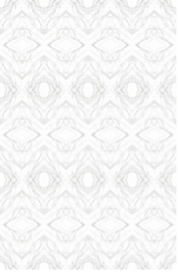Neolith applied for registration of an EU trade mark, the sign of which was a pattern consisting of a series of rhomboidal, oval and zigzagging figures, all in a blurred outline, without any colour or designation.

The goods in respect of which registration was sought are in class 19 of the Nice Agreement and correspond to the following description: “Prefabricated ceramic and porcelain tiles for covering all types of construction…” among other goods of a similar nature.
EUIPO refused registration of the mark on the basis of Article 7(1)(b) of Regulation 2017/1001. The Board of Appeal noted that the goods in question were intended for both the general public and the professional public, primarily in the construction and decoration sector, whose level of attention was normal to high. It considered that this was an application for a pattern mark. In view of its use as a decorative motif on surfaces, which was its most likely use, it considered that the case law on signs which are mistaken for the appearance of goods should apply and that, therefore, in order to be distinctive, the shape must differ significantly from that expected by the consumer and from the norm or customs of the trade. It went on to state that the target public of the requested pattern design would not perceive it as a design that departed substantially from the finishes and appearances of materials in the construction sector. It added that, in view of the complexity of the pattern and the diffuse nature of its lines, the target public would perceive it as a purely decorative element and not as a sign identifying the business origin of the goods in question.
It concluded that the mark applied for was devoid of distinctive character in respect of the goods designated.
The judgment dismissed Neolith’s appeal against EUIPO’s decision on the following grounds:
(a) It is wrong to consider, as the appellant submits, that the only requirement for registration of a pattern mark is the existence of a set of elements which are regularly repeated. Article 3(3)(e) of Implementing Regulation 2018/626 designates only the manner in which a trade mark is to be represented where it consists exclusively of a regularly recurring set of elements. However, the criteria for assessing distinctiveness remain applicable.
b) The mark applied for is devoid of distinctive character. Novelty or originality (as argued by the appellant) are not relevant criteria for the assessment of the distinctive character of a mark, so that for a mark to be registrable, it is not sufficient that it is original, but it must be substantially different from the basic shapes of the product concerned, commonly used in trade, and not be perceived as a mere variant, or even a possible variant of those shapes.
The mark applied for would not be perceived by the relevant public as identifying the commercial origin of the goods in question, since it was intended to be affixed to goods consisting of covering materials whose external appearance generally reproduces patterns. Only a mark which differs significantly from the norm or customs of the sector and is thus capable of fulfilling its essential function of indicating origin is not devoid of distinctive character.
STGUE of 12 January 2022 (Case T-259/21 Neolith v. EUIPO)


 Español
Español Deutsch
Deutsch